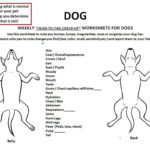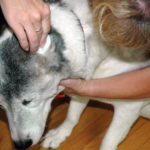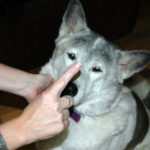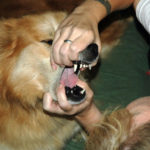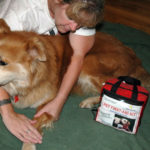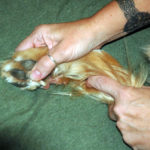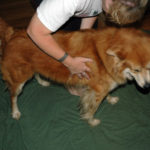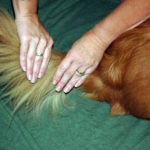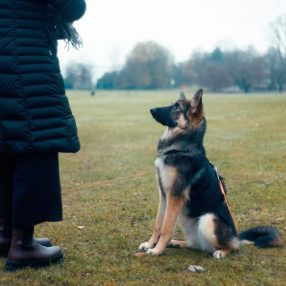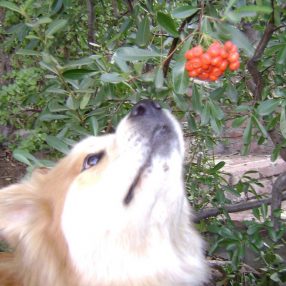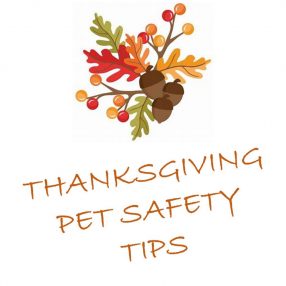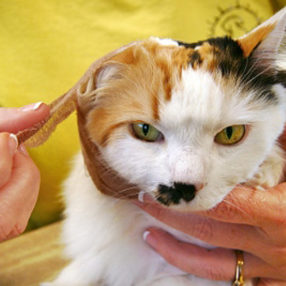Getting acquainted with your pet’s body and habits can help you detect problems early. A simple weekly Head-to-Tail Check-up is easy to learn and can help you bond.
Your dog can’t tell you what hurts, so it is important to know what is normal for him (what his body feels like, how he sits/stands, how often he drinks/how frequently he asks to go outside) so you can more quickly notice when something is not right. A weekly Head-to-Tail Check-up is one of the best ways to find and treat a problem before it becomes a nightmare!
Begin at the Head
Gently clean ears of dirt and waxy debris with ear wash or a soft cloth — never a cotton swab. If you discover redness, parasites or a foul odor, have your Veterinarian assist. What may look like coffee grounds, could be ear mites!
If eyes tear excessively, flush with saline solution. Compare one eye to the other for any differences making sure both pupils are the same size. If not equally dilated, your pet could have a concussion or tumor and should see his Vet immediately!
Feel the muzzle for bumps and tenderness. Due to bone and cartilage, it may be impossible to feel a tumor, so if the area appears sore or there is an unusual discharge from the nostrils, get to your Veterinarian for a thorough exam.
Carefully look in the mouth. Gums should be a healthy pink (unless your pet has black gums like Chows, Black Labs and many cats) with no bad odor. Do you brush your pet’s teeth regularly? It only takes 48 hours for plaque to turn to tartar leading to gum disease.
An All-over Doggie Massage
The rest of your check-up should be a gentle massage looking and feeling for things that don’t belong — abrasions, bumps, tenderness and sores; even parasites, burrs and foxtails that may have found their way onto your friend’s furry coat. When you reach his chest, you should be able to feel, but not see, the ribs. His breathing should be steady, but learn to check respiration and all of your dog’s vitals in a Pet First-Aid class.
Inspect legs and paws making sure claws and pads are not cracked and keep nails trimmed. Be gentle and go the speed that is comfortable for your pet. Many animals get uneasy when touched, but examine a little at a time, and they’ll come to enjoy this bonding experience.
With your fingertips, stroke the abdomen making sure there are no hard spots or sensitive areas. Check mammary glands, genitals and “under the tail” which should all be clean with no colored discharge. If your pet is older or arthritic and can’t perform his own hygiene, help keep him clean with a warm wet cloth. If you notice scooting or impacted anal glands, ask your Veterinarian or Groomer for help.
Take your pet’s pulse by feeling the Femoral Artery inside the thigh. Medium to large dogs should have a pulse of 70-160 while small dogs range between 110-220 beats per minute. Then long or short, fluffy or hairless, your pet’s tail too should be examined for bumps and sores remembering that the area right above often harbors parasites.
Throughout your assessment, notice your pet’s skin and coat for flaking or excessive shedding. The right brush can feel like a massage and help stimulate oil glands. If you notice anything that is not quite right, call your Veterinarian for his professional opinion.
The Fun Part
Conclude your head-to-tail check-up with a game of ball, a belly rub or a healthy treat and a good brushing knowing that you have done a good thing for your four-legged best friend!
Click on an image below to view full size:
Note: The articles on this page are copyrighted. Please do not reprint or use portions for any purpose without written permission from the author. Request permission for usage by sending an email explaining how you’d like to use the materials and what parts specifically. Thank you in advance!

